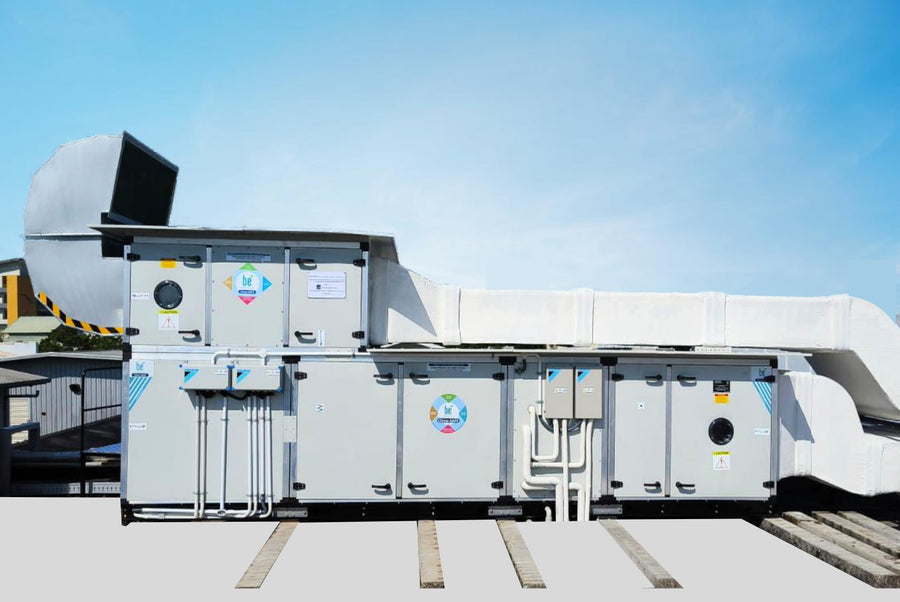IAQ Testing Quick Facts

PM10 And PM2.5
Fine particles directly emitted from aerosols, power plants, industries, construction activities and automobiles. Exposure to a high concentration of PM causes premature mortality, respiratory diseases and weakening of eyesight. Pre-existing heart, lung or asthmatic patients are highly sensitive to PM as these minute particles get inhaled while breathing and reach the already impacted organs, directly.

CO2
CO2 gets formed owing to all kinds of metabolic and combustion activities. Elevated levels of CO2 indicate an insufficient amount of fresh air and can cause headaches, dizziness, increased blood pressure, poor concentration and nausea.

TVOC
Concentration of Total Volatile Organic Compounds (TVOC) is usually up to ten times higher indoors than outdoors. The main sources are paints, chemical solvents, aerosol sprays, disinfectants, air fresheners, mosquito repellents, cosmetic products, etc. These compounds are carcinogenic to the human body. Health impacts include eye, nose, and throat irritation; headaches; loss of coordination; nausea; and damage to the liver, kidney, and central nervous system.

Formaldehyde
Formaldehyde (HCHO) is emitted as gas from certain solids or liquids. The concentration of HCHO is consistently higher indoors than outdoors. Sources of HCHO include furniture, paint, adhesives, aerosol sprays, chemical cleaners and disinfectants, and air fresheners.

Oxides Of Sulphur (SOx)
A non-flammable gas with a penetrating to odor that irritates the eyes and nose-lung air passages. Any SOx present indoors has come from outside. These gases are emitted from fossil fuel combustion, manufacture of sulphuric acid, incineration of refuse and coal burning. Exposure leads to a reduction or failure of lung function in asthmatics, tightness in the chest and frequent coughing.

Oxides Of Nitrogen (NOx)
A product of combustion, automobile exhaust, tobacco smoke, fossil fuel-fired electricity generating stations and indoor space heaters. NOxemissions are generally high in heavy traffic areas. Highly toxic in significant concentrations, causing serious lung damage with a delayed effect.

Carbon Monoxide (CO)
Colorless, odorless gas produced by incomplete combustion of all carbon fuels. Some sources of CO can be- Heating equipment (furnaces, water heaters, fuel-fired space heaters)–natural gas, kerosene Wood or coal stoves, fireplaces, ovens, charcoal grills, Engines (gasoline, diesel) and tobacco smoke. Major health effects from CO are Headaches, drowsiness, dizziness, Impairment of human respiration, vision & brain functioning, nausea, mental confusion.These symptoms often mistaken for the flu. Very high levels can cause death

Ammonia (NH3)
predominantly indoor air pollutant. Main source can be - Metabolic activity, cleaning activities. Due to its strong odor, it can easily smell. People often associate the smell with household cleaners like window cleaners and floor waxes. Introduction to high concentrations of ammonia in the environment can cause irritation to eyes, nose and throat as well as skin. Long-term health concerns related to ammonia exposure include: severe cardiovascular and respiratory effects, decreased lung function, asthma aggravation and premature death.

Bio aerosol
Bioaerosols were estimated to be responsible for approximately 5 to 34% of indoor particulate matter air pollution. Bioaerosols are very small airborne particles (ranging from 0.001 to 100 μm) that originate biologically from plants/animals and can contain living organisms Therefore, viruses, bacteria, and fungi may exist in bioaerosols. The sources of indoor bioaerosol pollution include outdoor sources (passing through windows, doors, and ventilation); building materials; furnishings; occupants; pets; house plants; and organic wastes. (contextual clarification) bioaerosols can be associated with certain human diseases, such as legionnaires, Tuberculosis, Whooping cough, Pneumonic plague, Anthrax and Smallpox

Hydrogen sulfide (H2S)
Exposure to hydrogen sulfide gas can occur in the home as well as in the workplace. In the home, it may occur because of faulty plumbing. Hydrogen sulfide gas enters home through sewer drains that have dry traps. Workers involved in the work of livestock farming, sewage







